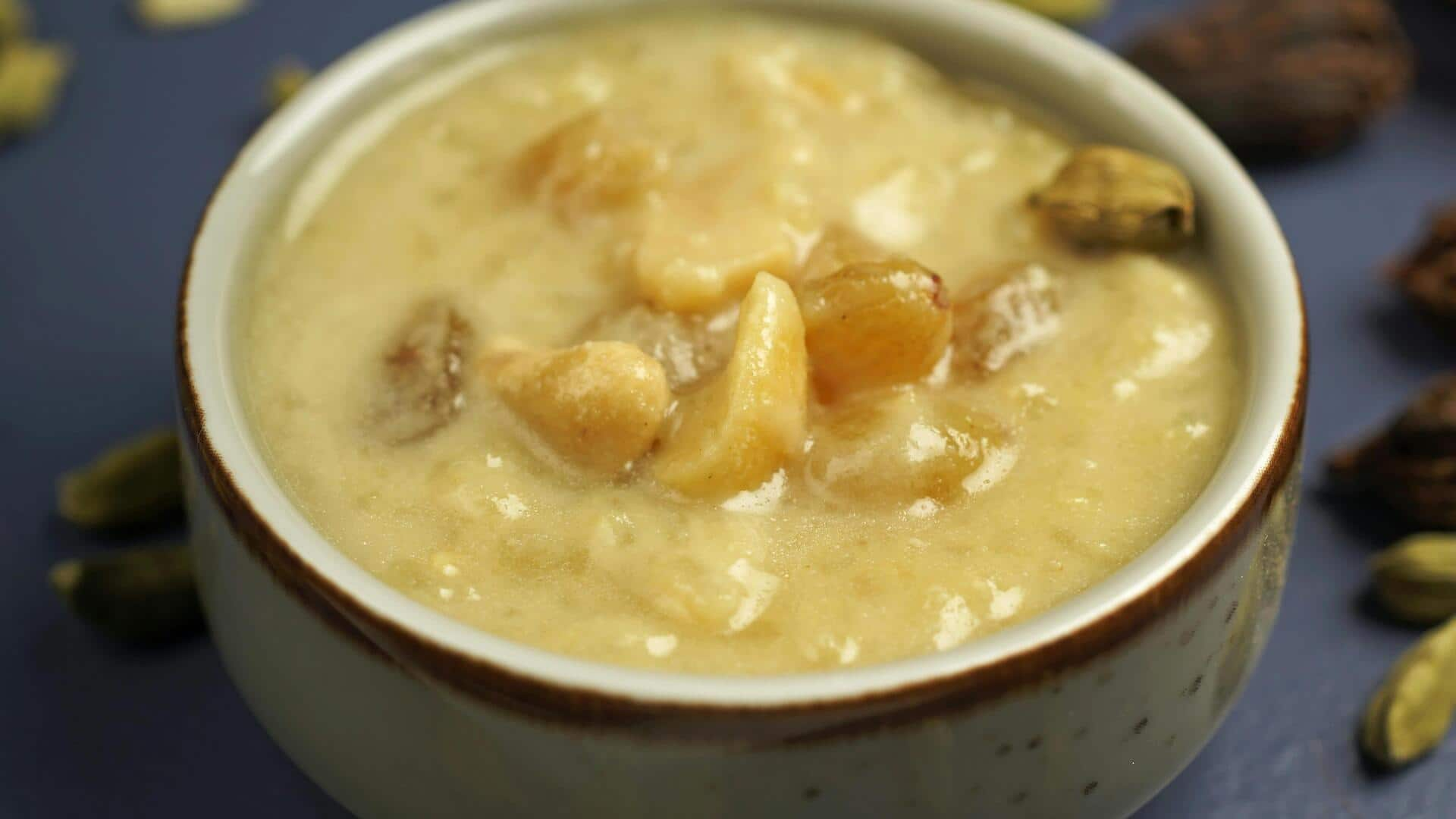
Kheer: Its ancient origins and modern twists
What's the story
Kheer, a traditional Indian dessert, has a rich history that dates back centuries. This creamy rice pudding, often flavored with cardamom and garnished with nuts, has evolved from its ancient roots to become a beloved dish in modern kitchens. Its journey reflects cultural exchanges and culinary innovations that have shaped its preparation and popularity over time.
#1
Ancient origins of kheer
The origins of kheer can be traced back to ancient India, where it was first prepared using rice or barley. Ancient texts mention this dish as a ceremonial offering and a part of royal feasts. It was made with milk and sweeteners such as honey or jaggery. The simplicity of these ingredients highlighted the dish's rich flavors and textures.
#2
Regional variations across India
As kheer traveled across the Indian subcontinent, it took on regional flavors and ingredients. In South India, for instance, it is commonly made with vermicelli or sago instead of rice. In Bengal, coconut milk is added for a richer taste. Each region's variation showcases local produce and culinary techniques while retaining the essence of this beloved dessert.
#3
Influence of trade routes
The ancient trade routes also played a key role in the evolution of kheer. Spices like cardamom and saffron were introduced through these routes, adding depth to the flavor profile of this dish. The exchange of ingredients between cultures enriched kheer's taste and made it more popular across different regions.
#4
Modern adaptations in contemporary kitchens
Today, modern adaptations of kheer can be found in contemporary kitchens across the globe. Chefs experiment with alternative grains like quinoa or millet, while others create fusion versions using fruits like mango or chocolate for added flair. These innovations keep tradition alive while catering to evolving palates and dietary preferences.